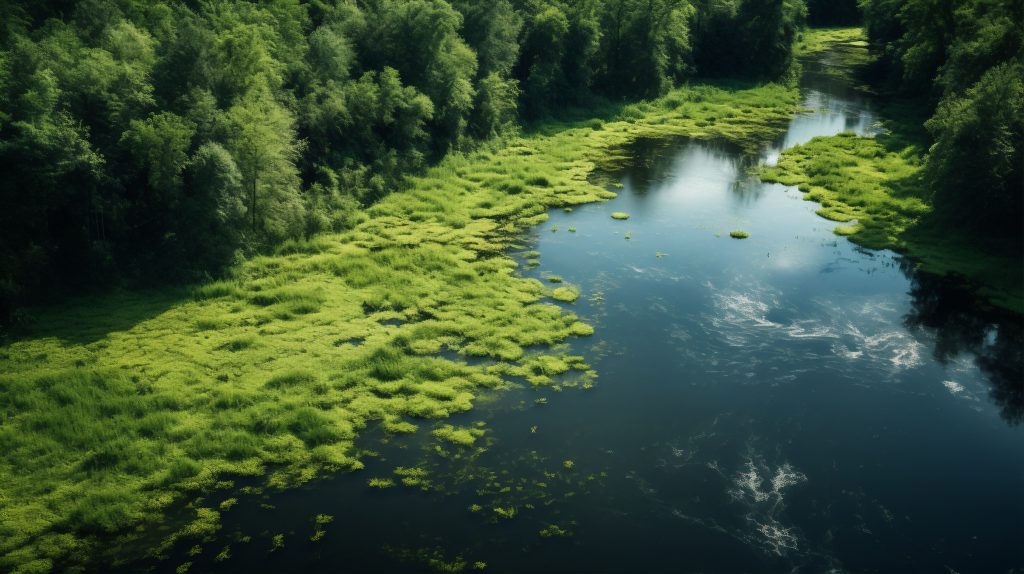In 2020, the Norwegian Supreme Court ruled on its first legal case regarding the climate, failing to address the full extent of the situation and ending up complying with the modus operandi and status quo of politics surrounding petroleum deposits exploration. However, the Court also set out an important precedent by making statements that have the potential to affect future Norwegian climate cases. Currently, the case awaits a judgement by the European Court of Human Rights, following the line of several other so-called “climate cases”.
I. Factual Background
Environmental groups (including Greenpeace Nordic and Nature and Youth Norway) brought an action against the Norwegian State (represented by the Ministry of Petroleum and Energy) arguing that the State violated the Norwegian Constitution by issuing in 2016 a block of oil and gas licences for deep-sea extraction and production in the Barents Sea. Even though the Barents Sea is located between Norway and Russia, the licences were granted for production on the Norwegian continental shelf after the Norwegian Parliament opened the southeastern part of the region to petroleum activity in 2013.
A production licence gives the licensee an exclusive right to perform exploration drilling and extraction of petroleum deposits. The licensee becomes the owner of the oil and gas that is produced. Private companies to whom were awarded the licences are not parties to this case. The judgement on the validity of an administrative decision is only aimed at the State. However, if invalidity is declared in regards to the decision of granting the licences, the public administration may be forced to consider revoking the licences, therefore affecting those private companies.
In 2018, the Oslo District Court ruled in favour of the State, and the decision was confirmed by the Borgarting Court of Appeal. The case reached the Supreme Court of Norway in 2020, which also ruled in favour of the State. The appellants referred the case to the European Court of Human Rights in 2021, which is still awaiting a judgement.
II. The Court’s Reasoning: Article 112º, Extraterritorial Emissions and the Paris Agreement
A. ARTICLE 112º.
Environmental groups argued that the decision to award production licences for oil and gas is invalid because it violates Article 112º of the Norwegian Constitution (on the right to a healthy environment), the Petroleum Act (interpreted in light of Article 112º) as well as the Paris Agreement. In a more concrete way, it was argued that the licences would allow access to still undeveloped fossil fuel deposits, which is inconsistent with the climate change mitigation required to hold global warming to below 1.5ºC. Alternatively, the environmental groups also argued that the decision is invalid due to a number of procedural errors.
Article 112º of the Norwegian Constitution states that “Every person has the right to an environment that is conducive to health and to a natural environment whose productivity and diversity are maintained. Natural resources shall be managed on the basis of comprehensive long-term considerations, which will safeguard this right for future generations as well. In order to safeguard their right in accordance with the foregoing paragraph, citizens are entitled to information on the state of the natural environment and on the effects of any encroachment on nature that is planned or carried out. The authorities of the state shall take measures for the implementation of these principles”.
The issue here is whether Article 112º of the Constitution confers substantive rights on individuals that may be asserted in court (and to which extent). The Court argues that some provisions in the Constitution clearly confer rights that may be asserted in court, while other constitutional provisions are mere “manifestos” imposing duties on the authorities, but from which one cannot derive specific rights that may be asserted in court. There are also some “intermediate” provisions: halfway solutions where certain rights may be asserted in court, but where the duties of the authorities are more extensive. The Court claims that Article 112º belongs to this “intermediate” category.
In order to determine which kind of provision Article 112º is, the Court looked at its legislative history and preparatory works (namely, its predecessor: Article 110ºb). By doing this, the Court found that Article 112º establishes a legal duty on the authorities to adopt adequate and necessary environmental measures, but that individual rights may only be asserted in court when this duty is grossly neglected. It is important to note that the Court does not give a clear and precise concept of “gross negligence”.
In this particular case, the Court argues that the duty was not grossly neglected because the State had adopted several measures to reduce national greenhouse gas emissions, including carbon tax, investment in renewable energy, supporting carbon capture and storage, supporting green technology and green transition in general, and joining the EU Emissions Trading System.
This was the first time the Supreme Court was asked to interpret Article 112º of the Norwegian Constitution. When interpreting the legal norm, the Supreme Court relied solely on the legislative history and preparatory works of the legal provision, disregarding other important tools for interpretation. Data and information about environmental issues unfolded by new scientific studies since 2014 (the year article 112º was established) were completely ignored. Particularly, the Paris Agreement (from 2015) could have had more weight in the interpretation, as it was ratified by Norway in 2016.
The Supreme Court’s decision does not rely on the right to a healthy environment, despite it being recognized in domestic constitutional law. In this particular case, the applicants tried to rely on the right to a healthy environment in order to have the public authorities halt practices that are harmful to the climate. The decisions taken by the Norwegian courts demonstrate that, even when the right to a healthy environment is explicitly recognized in national law, judges may be reluctant to rely on it. This shows a conservative approach of some courts when it comes to the interpretation of environmental rights, even when these are explicitly recognized in domestic constitutional law.
One must assume that the Constitution is the most important legal instrument inside the national legal order. Therefore, when the Supreme Court decided that Article 112º does not allow individual rights to be asserted in court (unless there’s “gross negligence”), it ended up turning a constitutional provision into an empty norm. By not giving a clear concept of “gross negligence”, it became very difficult to sustain in which situations Article 112º does actually allow individual rights to be asserted in court. As the Supreme Court itself stated, in order for the courts to set aside a legislative decision, the latter must have grossly neglected its duties under Article 112º. Consequently, “the threshold is very high”.
Despite Article 112º stating that “Natural resources shall be managed on the basis of comprehensive long-term considerations, which will safeguard this right for future generations as well”, the Court failed to even mention if the rights of future generations were safeguarded. The Supreme Court had the chance to address for the first time a legal case in Norway regarding the climate and provide a judgement aligned with the new climate crisis reality, while also respecting the rights of future generations, but that wasn’t the case.
It is worth mentioning that in October 2021, the United Nations (UN) Human Rights Council adopted a resolution recognizing “the right to a clean, healthy and sustainable environment” as a “human right that is important for the enjoyment of human rights”. In July 2022, the UN General Assembly also adopted a resolution recognizing the same “right to a healthy environment”. While formally not legally binding, these resolutions have a certain weight considering their political significance and the culmination of a lengthy diplomatic process.
B. EXTRATERRITORIAL EMISSIONS
Most of Norway’s petroleum production is exported, with the combustion (and, consequently, greenhouse gas emissions) taking place abroad. This is particularly relevant because the Court argues that combustions outside of Norway do not fall under the scope of Article 112º. The Court stated that “one must accept that the Parliament and the government built their Norwegian climate policy on the division of responsibilities between states in accordance with international agreements. Here, the principle is that each state is responsible for combustion on its own territory”. What the Court is arguing here is that, nevertheless the petroleum is extracted from Norwegian territory, if it is exported and combusted overseas (and therefore resulting in a profitable economic gain for the Norwegian economy), it is not a Norwegian responsibility anymore.
However, this is inconsistent, when taking into consideration that the Court previously stated that “global emissions will also affect Norway” and that “the climate in Norway has changed notably during the last century”. The Court sustains that Article 112º only covers the environment in Norway, purposefully forgetting that the Norwegian environment is not isolated from the rest of the world. While recognising the severity of the climate crisis, the Court failed to give a decision aligned with the measures to mitigate climate change.
In addition, the Supreme Court sends mixed signals when it comes to exterritorial emissions since it also states that “Article 112º does not provide general protection against actions and effects outside the realm. However, if Norway is affected by activities taking place abroad that Norwegian authorities may influence directly on or take measures against, this must also be relevant to the application of Article 112º. An example is combustion of Norwegian produced oil or gas abroad, when this causes harm also in Norway.”.
C. THE PARIS AGREEMENT
When it comes to the Paris Agreement, the Court points out that the decision to award the licences was issued six months after the Paris Agreement was signed, but ten days before Norway ratified it and five months before it entered into force. Therefore, since the licences were granted before the ratification and the actual entry into force, they do not fall under the scope of the treaty. If the treaty was applied to this particular situation, the granting of the licences by the State would go against Norway’s obligations under the agreement. One cannot help but wonder if the decision to issue the permits 10 days before the ratification of the Paris Agreement was a strategic move.
The Paris Agreement could have been taken into account differently by the Court in the decision-making process. However, when pointing out this succession of dates, one must assume that the Court would have given greater weight to the Paris Agreement (and possibly would have considered the licences invalid) if the licences were issued after the entry into force of the Paris Agreement. This rationale from the Court might be relevant for future cases if the Norwegian State issues more permits for exploration, drilling and extraction of petroleum deposits.
III. The case before the European Court of Human Rights (ECtHR)
When appealing the first decision made by the Oslo District Court, environmental groups claimed that the awarded licences violated Article 2º (right to life) and Article 8º (right to respect for private and family life) of the European Convention on Human Rights (ECHR).
The Norwegian State maintained that the environmental groups cannot invoke the violation of those legal provisions, since they are not a “victim” under Article 34º of the Convention.Under the European Court of Human Rights system, there are “direct”, “indirect” and “potential” victims. The word “victim”, in the context of Article 34º of the Convention, denotes the person or persons directly or indirectly affected by the alleged violation. Hence, Article 34º concerns not just the direct victim or victims of the alleged violation, but also any indirect victims to whom the violation would cause harm or who would have a valid and personal interest in seeing it brought to an end.
The Supreme Court also concluded that the licences did not violate Article 2º and Article 8º of the ECHR. In this regard, the Norwegian Supreme Court held that climate change is not a real and immediate risk to the lives of the people of Norway and that there was not a direct and timely connection between oil licences, the emissions resulting thereof, and the privacy, family life, or home of the applicants.
In 2021, the applicants brought the case to the European Court of Human Rights (ECtHR), arguing that Norway failed to protect their human rights under the already mentioned Article 2º and Article 8º while also adding Article 13º (right to an effective remedy) of the Convention. The case is now known as People v. Arctic Oil.
This case belongs to one of many others following a trend: they are the so-called “climate cases” recently brought against States before the Strasbourg Court. A prime example of this is Duarte Agostinho and Others v. Portugal and Others. In this particular case, six Portuguese children and young people argue that Portugal and over 30 other European States are not doing enough to protect them from the impacts of climate change, claiming that the States concerned are failing to comply with their positive obligations under the already mentioned Article 2º and Article 8º of the Convention. This particular case concerns the polluting greenhouse gas emissions which, in the view of the applicants, contribute to the phenomenon of global warming, resulting in heat waves affecting the applicants’ lives, living conditions, physical and mental health.
The Verein Klimaseniorinnen Schweiz and Others v. Switzerland case was brought by a group of elderly Swiss people concerned with the consequences of global warming on their living conditions and health. The applicants argued that the Swiss State has failed to fulfil its positive obligations to protect life effectively and to ensure respect for their private and family life, including their home, therefore violating Article 2º and Article 8º of the Convention.
In all of the mentioned cases, the ECtHR is being asked to rule on the issue of State climate-change action for the first time. Climate litigants worldwide are increasingly bringing “climate cases” against governments, invoking that States are undertaking the Paris Agreement and falling below their obligations, which causes them to suffer violations of their Convention rights. In 2021, the world’s most established climate litigation databases (compiled by the Sabin Centre for Climate Change Law at Columbia Law School and by the Grantham Research Institute on Climate Change and the Environment at the London School of Economics) listed 112 “climate cases” (out of 1.841 cases) that relied on human rights.
The ECtHR has not yet ruled on any of the climate cases that have been submitted to its appreciation. However, the reality is that all eyes (and expectations) are on the Strasbourg Court. Whatever the Court’s decision, it will carry significant weight and set out important precedents.
One of the obstacles for the environmental groups of People v. Arctic Oil is to prove their status as “victims” under Article 34º of the Convention. This was the same obstacle present in Verein Klimaseniorinnen Schweiz and Others v. Switzerland. In a 2020 judgement, the Swiss Federal Court held that the applicants were not sufficiently affected by the alleged failures in terms of their right to life, or their right to respect for private/family life and home to be considered “victims”. Therefore, it is expected that the applicants will try to argue the status of “indirect victims” before the European Court of Human Rights.
With several climate cases pending, 2024 will likely be the year that the ECtHR will address the human rights violations allegations related to the climate crisis. The ruling of the ECtHR in favour of environmental groups and against the delayed action from States to fight climate change as a human rights issue under the Convention is not only desirable, but legally possible. If we think about the State’s obligation to comply with international treaties (such as the Paris Agreement) and protect its own citizens and future generations from climate alterations, we may find by next year a very important precedent on the matter (one that will set the standards for the next decade in climate litigation and at the international legal order).
Peer-Reviewed by:
- Professor Lucila de Almeida, PhD., Abreu Chair in ESG Impact and Professor at NOVA School of Law.
- Professor Laura Iñigo Álvarez, PhD., Associate Researcher (Investigadora Auxiliar) in International Law at NOVA School of Law and CEDIS.



